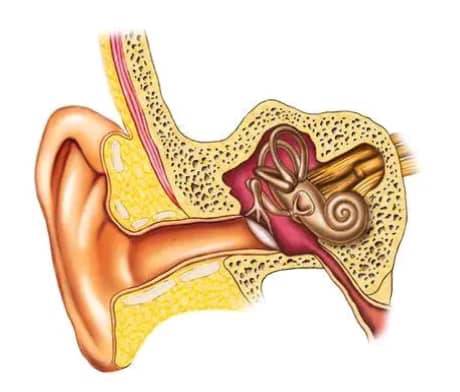The heart of man
A muscle is a muscular organ that pumps blood through the blood vessels through the arteries. The word cardiac means are related to the heart. Most of the walls of the heart chambers are made up of cardiac muscles.
In the human body, the heart is located in the center of the chest cavity, i.e. the thorax, between the two lungs, under the breast bone. The heart is enclosed in a bag made of pericardium (pericardium). There is a fluid between the pericardium and the walls of the heart called pericardial fluid. This fluid reduces friction between the pericardium and the heart during heart contractions
 |
| heart of man |
The human heart works as a double pump. first It receives blood-excluded oxygen from the body and pushes it to the lungs. At the same time, it takes more blood inclouded oxygen from the lungs and pushes it to the whole body. Deoxygenated and oxygenated blood are kept separate inside the heart. Now here is a brief description of the circulation of blood inside the heart which will explain its double pump mechanism.
The right atrium receives deoxygenated blood from the body through two large vessels, the superior vena cava and the inferior vena cava pump into the right ventricle are part of the heart. A valve (valve) protects the opening between the right atrium and the right ventricle. This valve is called the tricuspid valve because it has three flaps. When the right ventricle As the blood contracts, it travels to the lungs through the pulmonary trunk. The work of the tricuspid valve is that prevents the backflow of blood from the right ventricle into the right atrium which is a part of our hearts. At the base of the pulmonary trunk, is a pulmonary semilunar. A valve is present that the pulmonary left atrium receives oxygenated blood from the lungs through the pulmonary veins. When it contracts, it pushes the oxygenated blood into the left ventricle. The opening between the left atrium and the left ventricle is protected by a Bicuspid valve. This valve has two flaps for blood flow from the trunk to the right ventricle. Blocks. When the left ventricle contracts, acid blood flows into the aorta
The source goes to the whole body (except the lungs). A bicuspid valve prevents the backflow of blood from the left ventricle into the left atrium. At the base of the aorta, there is an aortic semilunar valve that prevents the backflow of blood from the aorta into the left ventricle.
Both eater or fill at the same time. They contract together to pump blood into the ventricles. Similarly, both ventricles contract at the same time to push blood out of the heart.
The left ventricular wall is the thickest (about 0.5 inches). They have the power to push blood throughout the body. This is proof that the parts of the heart corresponding to their functions.
Pulmonary and Systemic Circulation
We see that on the right side of the heart, the DA takes blood from the body and delivers it to the lungs, while the left side of the heart takes blood from the lungs and delivers it to the body. The way in which the heart d. Oxygenated blood is brought to the lungs and from there oxygenated blood is brought back to the heart, the pulmonary circulation or circuit is called (circulation or circuit). Deionized blood is returned to the heart, called the systemic circulation or circuit.
 |
| Pulmonary and Systemic Circulation |
Heartbeat and Heartbeat They are filled with blood by the relaxation of the heart cells and by the contraction, they expel the blood inside them. A cardiac cycle makes a cardiac cycle and a complete cardiac cycle makes a heartbeat. A complete card cycle has the following steps:
The atria or ventricles relax and blood fills the atria. This period is called cardiac diastole (diastole). Immediately after filling, both atria contract and pump blood into the ventricles. This period of a cardiac cycle is called atrial systole. After that Both ventricles contract and pump blood toward the body and lungs. The period of contraction of the ventricles is called ventricular systole.
Diastole lasts about 0.4 seconds in one heartbeat, atrial contraction takes about 1/10s, and ventricular systole takes about 3/10s to complete.
(When the ventricles contract, the tricuspid, and bicuspid valves close, producing a "lubb" sound. Similarly, when the ventricles relax, the cuspid valves close, making the dub sound.) The sound of " is produced. Lee. The 'dub' can be heard with the help of a stethoscope.
Heart rate and Pulse rate
Heart rate refers to the number of beats in one minute. A healthy man's heart rate at rest or during light activity is 70 beats per minute, while a healthy man's heart rate is 70 beats per minute. A woman has 75 beats per minute. Heart rate changes depending on physical activity and mental stress.
 |
| Heart rate and Pulse rate |
And there are contractions, which are caused by the heart contracting as blood moves into it. The pulse can be felt in parts of the body where the artery is close to the skin, such as the wrist, neck, groin area, or the top of the foot.

.jpg)

.jpg)


